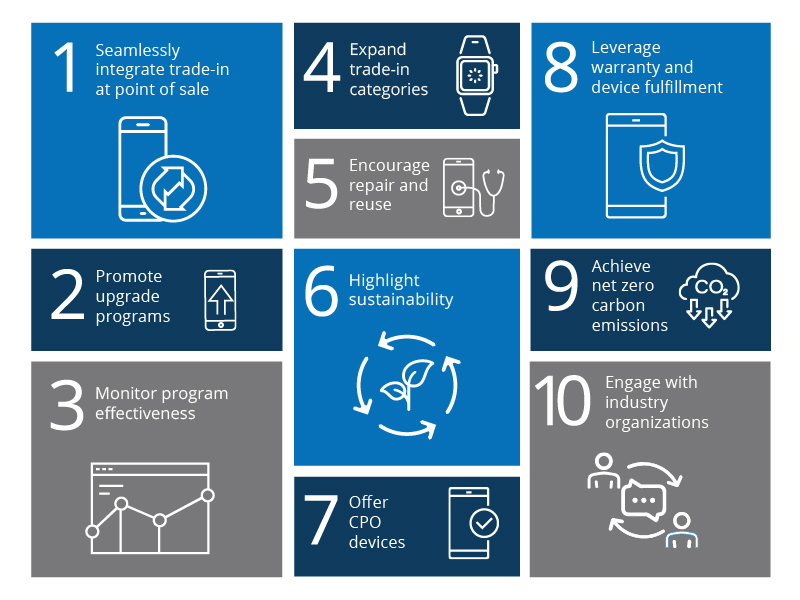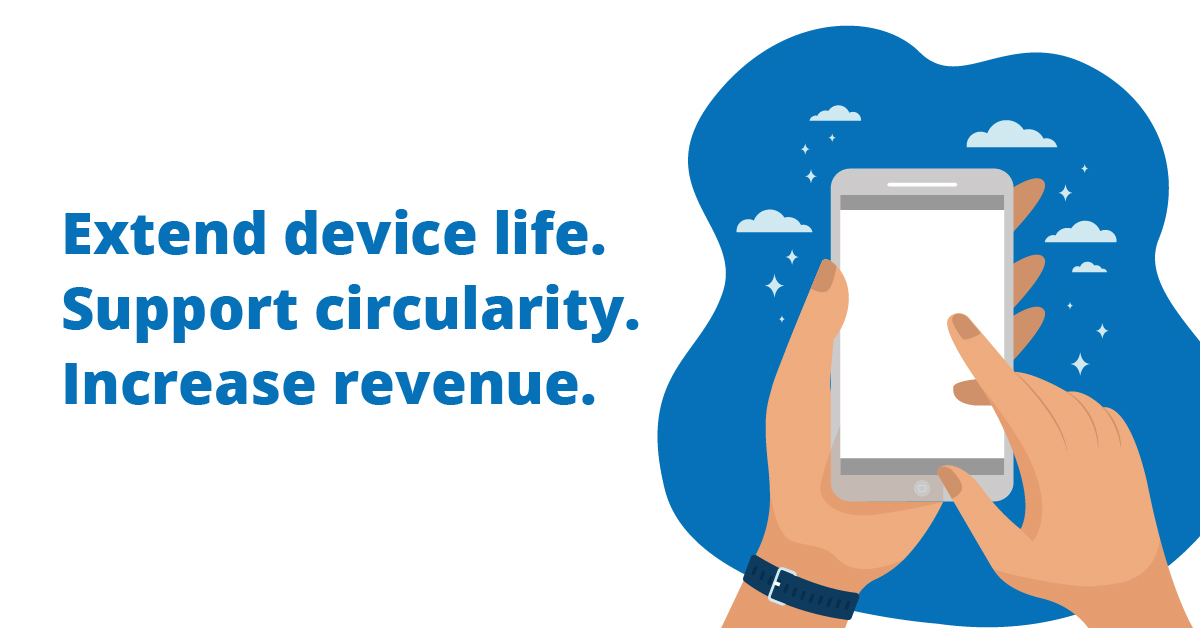In today's environmentally conscious marketplace, implementing effective circularity strategies isn't just good for the planet — it's good for business. By optimizing your mobile device programs for sustainability, you can create valuable secondary market opportunities while meeting the growing consumer demand for eco-friendly practices.
What is Device Circularity?
Device circularity focuses on maximizing the lifecycle of mobile devices through reuse, refurbishment, and repair. It reduces waste and minimizes the environmental impact of manufacturing new products. By prioritizing circularity, businesses save resources, cut costs, and generate revenue by reintroducing devices into the secondary market.
Here are ten proven strategies to enhance sustainability in your mobile device ecosystem while generating new revenue streams.
1. Enable Seamless Integration of Trade-In at Point of Sale
Make trade-in options simple and noticeable throughout the shopping experience, whether customers are buying online or in stores.
Online, include clear trade-in prompts during checkout to make it easy for shoppers to opt in, like, “Have an old device to trade in?” with easy-to-follow instructions. In physical stores, use eye-catching signage near the checkout area or display counters to remind customers about trade-in opportunities.
Train sales staff to actively mention trade-ins during customer interactions. For example, when a customer is looking at a new device, staff can ask, “Are you thinking about upgrading? Don’t forget we can give you money for your old phone!” This way, trade-ins become an integral part of the conversation rather than an afterthought.
When trade-ins are seamlessly integrated like this, more consumers participate, and fewer devices end up as e-waste. Instead, those used devices can be refurbished and resold in secondary markets. Refurbished devices support sustainability and provide affordable options for customers. It’s a win-win for your business and the planet.
2. Promote Upgrade Programs
Early upgrade programs create a steady flow of quality used devices by encouraging customers to upgrade sooner, typically within two years. This shorter cycle provides businesses with newer models that hold more value in the secondary market, appealing to buyers with the latest features and technology.
For customers, these programs offer convenience and flexibility, making it easier to access the latest devices without long waits or high costs.
3. Monitor Program Effectiveness
Regularly evaluate and update trade-in offers to ensure they remain competitive within the industry.
By analyzing trends and competitor offerings, you can adjust trade-in values and promotions to maximize participation. Limited-time deals tied to new product launches or seasonal sales can encourage engagement, while focusing on collecting high-demand devices boosts the value of your program. These efforts build customer trust, strengthen loyalty, and provide a steady supply of quality devices for refurbishment and resale.
For customers, competitive trade-in programs offer meaningful value, making it easier and more appealing to upgrade devices. Programs that reflect market needs help customers feel confident they’re getting the best deal while also promoting sustainability by reducing e-waste. Businesses benefit from adapting their offers to align with both customer expectations and environmental goals, ensuring long-term success and continued growth.






